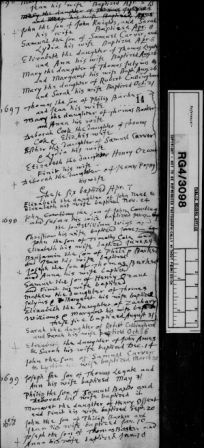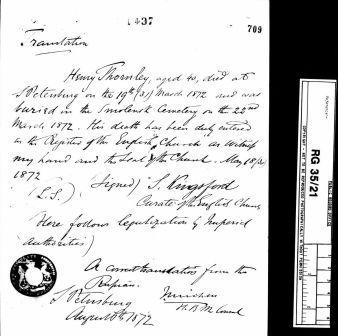September 1752 was a very short month. In fact, it was 11 days shorter than the average September, to bring the United Kingdom into line with most of the rest of Europe. In fact, there were three separate calendars in use in 18th century Europe; Catholic states had generally adopted the new (and astronomically more accurate) Gregorian calendar in place of the Julian calendar the 16th century, Protestant states took it up in the 18th century while the Orthodox Christian countries of Russia, Greece and the Balkan states did not come into line until the early 20th century.
This can lead to misunderstandings over dates in historical documents, especially before September 1752. In that year, 2 September was immediately followed by 14 September, which must have caused some difficulty for anyone for whom one of the ‘missing’ days had some significance, like a birthday or a legal contract. As well as the loss of 11 days to bring the days into line with those countries already using the Gregorian calendar, the other major change adopted was that the start of the year was now 1 January, and not 25 March, or Lady Day.

Independent chapel Wrentham, Suffolk: baptism register
If you look at early church registers of baptisms, marriages and burials you can easily see when the new year begins, as in this example from the baptism register of the Independent chapel at Wrentham, Suffolk. But if you see a reference just to a single entry dated between 1 January and 24 March, perhaps on a family tree, it might not be obvious whether the date is exactly as it appears in the register, or has been adjusted to conform with the Gregorian calendar. This is where the ‘double-dating’ comes in. To avoid any ambiguity, the correct way to express one of these dates is in the format ‘20 March 1698/99’. This register also provides an interesting example of ‘double-dating’ at the bottom of the page, in acknowledgement of the fact that there was an alternative system of dating in existence.
From 14 September onwards dating is a much simpler business, but there was still scope for confusion. Countries where Orthodox Christianity prevailed continued to use their own calendar for much longer, so dates of events taking place in those countries need to be treated with care. Registers of British consulates and churches in those countries habitually used both dates for events registered there, such as this entry from the register of the British consulate in St Petersburg recording the death of Henry Thornley, who died on 19 or 31 March 1872.

British consulate St Petersburg, Russia
Nowadays the Gregorian calendar is in general use, so you might think that the question of expressing dates was straightforward and unambiguous. But of course it isn’t. We may all use the same calendar, but in the English-speaking world there is still a major cultural divide: dates expressed entirely numerically have different meanings on either side of the Atlantic. In the USA they use the format ‘month/day/year’ while the British habit is to use ‘day/month/year’. This is fine if the day is 13 or above, but otherwise it is ambiguous, so that 1/12, for example, could be 12 January or 1 December, depending on your location.
So that is why the good genealogist, or any kind of historian, will never express a month in figures unless forced to do so when filling in an unforgiving online form, and when they do, they wince.
Behind the scenes on those online forms the dates are probably being stored in a database. Doing arithmetic on dates is a pain, so usually the database will actually store dates (or usually date time, a combination of the date and a time on that day, defaulting to midnight if no time is specified) as a number of seconds after a base date. Here again we have double-standards: Microsoft uses one base date (Midnight 30 December 1899 – the fact it’s 30 December, not 31 goes back to Lotus 1-2-3 and the fact that 1900 wasn’t a leap year) and Unix-type systems a dfiferent one (Midnight 1970-01-01)
You say “there were three separate calendars in use”. That’s not accurate, is it? There were only two separate calendars in use, but different countries switched between them at three different times. And even that’s a bit of an oversimplification as there were far more than three switchover dates. See, for example:
“Spain, Portugal, the Polish-Lithuanian Commonwealth, and most of Italy implemented the new calendar on Friday, 15 October 1582, immediately following Julian Thursday, 4 October 1582. The Spanish and Portuguese colonies adopted the calendar later because of the slowness of communication. France adopted the new calendar on Monday, 20 December 1582, immediately following Sunday, 9 December 1582. The Dutch provinces of Brabant, Zeeland and the Staten-Generaal also adopted it on 25 December of that year, the provinces forming the Southern Netherlands (modern Belgium) on 1 January 1583, and the province of Holland followed suit on 12 January 1583.”
(From http://en.wikipedia.org/wiki/Gregorian_calendar#Adoption_in_Europe)
Dave, you are quite right to say that it is an over-simplification. In his ‘Handbook of Dates for Students of English History’ (1945) G L Cheney takes more than 10 pages to explain the Julian and Gregorian calendars, and the stages by which various countries moved from one to the other. The main point I was trying to make is summarised far more elegantly by him as:
“The student of history from 1582 onwards, therefore, is in a worse plight than before, for he has to be sure, as he deals with the documents of Catholic, Orthodox or Protestant states, whether at the date concerned that state was dating by the Gregorian calendar (‘New Style’) or by the Julian calendar (‘Old Style’) ” and he later recommends “…careful consideration of the origin of any document in use and the habits of its writer. A difference of dating may amount to 10, 11, 12 or 13 days according as the document is written after 1582, 1700, 1800 or 1900” and so on.
On reflection it would have been more accurate to say that there were three principal dating authorities, Catholic, Protestant and Orthodox, rather than three calendars, as you correctly point out that between them they only used the two calendars, Julian and Gregorian. There are, however, even more calendars and dating systems that a researcher might need to take into account: regnal years, the medieval practice of using saints’ days rather than ordinal numbers within a month, the French revolutionary calendar and more.
It gets even more complicated when Scotland changed their calendar in 1600 but I like the Napoleonic calendar which didn’t last long after the Revolution. Researchers should avoid anything that staes a year ending as ’00’ (1700/1800/1900/2000) as it can lead to confusion. Of course if you cross the international dateline going east then you have to go through the day again.